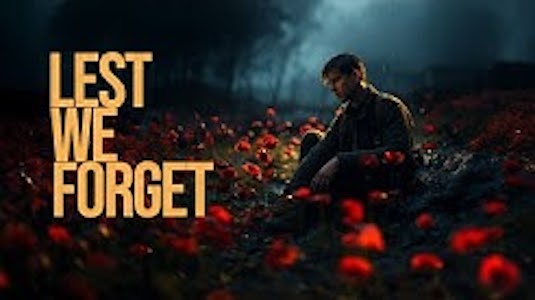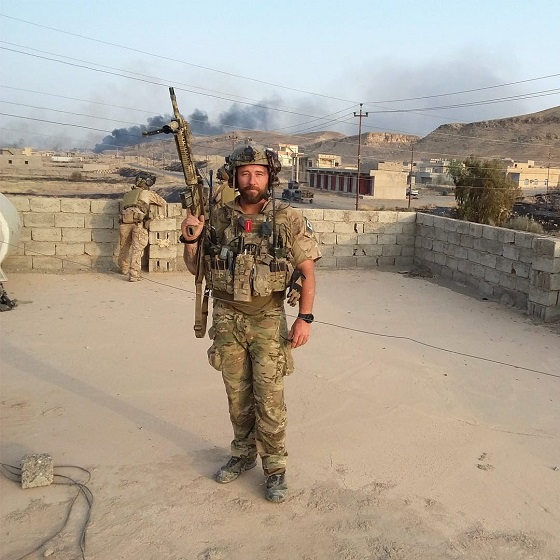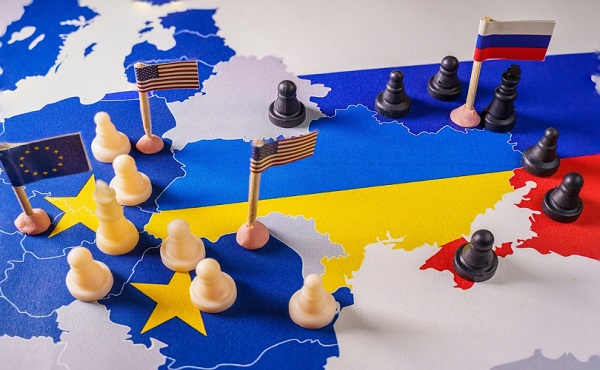armed forces
Lest we forget – A tribute to Canadian veterans

From Youtube.com/@supercanadiandude
Experience the power of Leonard Cohen’s haunting narration as he recites ‘In Flanders Fields’ by John McCrae in this epic cinematic journey through Canadian military history.
Witness real wartime film footage from World War I to Afghanistan, set to the evocative soundscape of Hans Zimmer’s music, and intensified by gripping sound effects from the Battlefield video games.
Immerse yourself in the heart-wrenching film footage of heroism and sacrifice in this Remembrance Day Video. As we pay homage to the heroes of the past and present this Remembrance Day or Memorial Day, let us also pledge to safeguard a future where peace and unity prevail, for the alternative is a world forever changed.
This Remembrance Day Video serves as a poignant reminder of the sacrifices made for freedom.
[Music by Hans Zimmer | Footage courtesy of YouTube and Library and Archives Canada]
armed forces
Judge dismisses Canadian military personnel’s lawsuit against COVID shot mandate

From LifeSiteNews
Associate Judge Catherine Coughlan rejected a lawsuit from more than 300 past and current members of the Canadian military who lost their jobs or were put on leave for not taking the experimental, dangerous COVID shots.
A Canadian federal judge has thrown out a lawsuit filed on behalf of some 330 past and current members of the nation’s military who lost their jobs or were placed on leave for refusing the experimental COVID shots, because she alleged that their lawsuit lacked “evidence” that the jabs were harmful.
The Canadian Armed Forces (CAF) members had sought some $1.3 million in damages from the government for having their charter rights violated due to the military’s 2021 COVID mandates, according to their lawsuit.
In a November 13 ruling, Edmonton-based Associate Judge Catherine Coughlan ruled in favor of the Trudeau government, and thus military’s COVID jab mandate, to strike down the case. Coughlan remarked that the plaintiffs’ case lacked “material facts” along with “evidence” and was filled with “vexatious language.”
READ: Canadian father files $35 million lawsuit against Pfizer over son’s jab-related death
“The only indications of bad faith are found when the pleadings baldly assert that, among other claims, Canada failed to carry out safety and efficacy testing for the vaccines, and that the Directives were premature and ‘promoted the fraudulent use of the biologics’,” she wrote, overlooking reports of thousands of injuries due to the shots in Canada alone.
As a result of the lawsuit being tossed, all plaintiffs are now on the hook to pay some $5,040 out of pocket in legal costs.
As reported by LifeSiteNews in June, documents obtained by LifeSiteNews show that the number of jab injuries in the CAF rose over 800 percent in 2021, with the most being credited to Moderna’s experimental COVID shot.
The CAF members’ lawsuit was filed in June of 2023 and overall sought some $1 million in damages, along with an extra $350,000 in general damages. The lawsuit also had a condition that there be a declaration made that mandating the COVID shots for military members was a violation of their charter rights.
READ: Israeli boy featured in COVID vaccine campaign dies of heart attack at age 8
LifeSiteNews reported in July that a member of Canada’s military who was injured after taking the experimental mRNA COVID jabs has been denied compensation from the nation’s Veterans Affairs department.
Under the CAF’s mandate, hundreds of military members were fired, or one could say, purged for not getting the COVID shots. This is in addition to the thousands of public servants fired for not agreeing to take the COVID shots.
The CAF eventually ended its COVID mandate in October 2022, which was months after the federal mandate was lifted, but members are still “strongly encouraged” to take the experimental shot.
The federal government under Prime Minister Justin Trudeau announced that its federal COVID shot workplace mandate would be dropped in June 2022, as would the mandate requiring domestic travelers have the shot to board planes and trains.
In November of 2023, a CAF member who spoke to LifeSiteNews under the condition of anonymity observed that the military considers members who refuse the COVID jab “a piece of garbage.”
READ: COVID shots have 200-times higher risk of brain clots than other jabs: new report
In March, LifeSiteNews reported on large personnel losses causing the CAF to consider dropping its remaining requirements altogether.
Although Canada has a Vaccine Injury Support Program (VISP) program, active members of the CAF, as well as veterans, are not eligible for the civilian program. According to Christensen, this leaves many COVID jab-injured CAF members and veterans with no recourse other than Veterans Affairs Canada.
COVID shot mandates, which came from provincial governments with the support of Trudeau’s federal government, split Canadian society. The mRNA shots themselves have been linked to a multitude of negative and often severe side effects, such as heart diseases, stroke, and death, including in children.
The shots also have connections to cell lines derived from aborted babies. As a result, many Catholics and other Christians refused to take them.
armed forces
Canadian veterans battle invisible wounds of moral injury and addiction

Moral injury, a unique psychological trauma, drives many Canadian veterans to substance use disorders as they struggle with inadequate support
When he was stationed in Bosnia in 1994, Steve Lamrock would drive a truck loaded with food through villages full of hungry people.
As a Canadian Armed Forces platoon quartermaster, one of Lamrock’s duties was transporting food to other soldiers involved in the United Nations Protection Force’s peacekeeping mission in the war-torn country.
“I had people starving to death, children starving to death,” he recalled, his wife seated beside him for support. “I could see, weekly, the deterioration in certain people in the community and the elderly from a lack of nutrition.”
Often, there was a surplus of rations.
“The UN policy was, if you can’t give exactly equal to both sides, you don’t give anything away,” he said, adding that it could trigger violent raids if you provided food to just one faction.
“So we would throw out food when there’s people starving to death.”
Moral dilemmas like these haunted Lamrock long after he retired from the military in 2009. Tormented by nightmares, he turned to alcohol to cope. “When I drank so much I passed out, I wouldn’t dream or remember the dreams as vividly or as often,” he said.
Lamrock — whose 24-year military career included tours in Afghanistan, Bosnia, Croatia, Kosovo and Iraq — was identified as suffering from psychological distress caused by the perception of having violated one’s moral or ethical beliefs. Experts are now calling this moral injury.
Moral injury is not formally recognized in the Diagnostic and Statistical Manual of Mental Disorders, an authoritative manual on mental disorders. But experts and veterans say moral injury affects many individuals who serve in the military, and requires better institutional support and treatment than are currently available.
Moral injury and addiction
“[Moral injury presents as] shame, guilt and anger that occurs when someone is exposed to an event that goes against their moral values, standards or ethics,” said Dr. Don Richardson, a psychiatrist and scientific director of the MacDonald Franklin Operational Stress Injury Research Centre in London, Ont. The centre studies the impact of stress injuries on military personnel, veterans and first responders.
Moral injury can result not only from witnessing or causing harm, but also from being affected by an organization’s actions or inactions, Richardson says.
The term moral injury was first introduced in the 1990s by American psychiatrist Dr. Jonathan Shay, who worked with veterans of the Vietnam War. It gained wider recognition following the Iraq and Afghanistan wars, when traditional treatments for post-traumatic stress disorder (PTSD) — such as Cognitive Behavioural Therapy — were proving to be only partially effective.
While fear is often at the core of traditional PTSD cases, feelings of guilt, shame, anger and betrayal are more strongly linked to cases of moral injury, says Dr. Anthony Nazarov, associate director of the MacDonald Franklin Operational Stress Injury Research Centre and an expert on moral injury.
Nearly 60 per cent of Canadian Armed Forces personnel deployed in NATO operations in Afghanistan reported exposure to morally injurious events, according to a 2018 study co-authored by Nazarov. Those exposed to such events demonstrated a greater likelihood of developing PTSD and major depressive disorders.
Dr. Ronald Shore, a research scientist and assistant professor in psychiatry at Queen’s University, says individuals suffering from moral injury often develop coping strategies due to a lack of support to help them process traumatic experiences.
One common coping mechanism is substance use, he says.
“You’re constantly feeling like something is wrong with you, that you’ve done something wrong … that leads to that self-regulation with addiction,” Shore said.
Lamrock says his experiences in Bosnia — and the habits he developed afterwards — deeply affected him and his family.
He recalled promising his young daughter they would do something fun after a night’s rest. “‘No, you won’t, Daddy, you won’t get up,’” she had replied, knowing he would likely be too hungover.
“That was my motivation to quit,” he said.
Betrayal
It is common for veterans suffering from moral injury to feel angry or betrayed due to the military’s actions or lack of support.
“[A person feels] betrayed by policies, betrayed by leaders, betrayed by organizations,” said Nazarov.
This has been the case for Gordon Hurley, 37, whose 14-year career in the Canadian Armed Forces included tours in Afghanistan, Africa and Iraq.
“When you get out, there’s nothing,” Hurley said. “If you think that Veterans Affairs is going to support you … they will, but you’re gonna have to fight for it.”
Hurley was medically discharged from the military in 2021 due to various physical and mental health challenges, including PTSD. He says Veterans Affairs requires him to continually prove the severity of his injuries to maintain disability support and benefits, such as reimbursements for retinal surgery and rehabilitation.
Hurley says that having to repeatedly prove his injuries to Veterans Affairs has been frustrating. “You were the ones who released me from the military … for these injuries, but now you are asking me to prove them back to you?” he said.
The Canadian Armed Forces redirected inquiries about support for veterans with moral injury and substance use disorder to Veterans Affairs Canada.
In an emailed statement to Canadian Affairs, Veterans Affairs spokesperson Josh Bueckert said mental health-care practitioners who work with veterans are “well aware of moral injury” and recognize the condition is often associated with operational stress injuries.
Bueckert said the department provides funding to organizations such as the Atlas Institute for Veterans and Families, which has a moral injury toolkit for veterans.
He also noted the department offers veterans a range of mental health resources, including access to 11 operational stress injury clinics and a network of 12,000 mental health professionals. Bueckert said veterans also have access to treatments for substance use disorder and for conditions such as “trauma-and-stressor-related disorders.”
Hurley acknowledges all these benefits are available, but says they are hard-won.
“All those benefits listed you get, but unless your condition has been [approved by the department], you do not receive those benefits,” he said.
‘Never-ending battle’
Josh Muir, 49, served nearly 14 years in the military and was deployed twice to Afghanistan. After sustaining soft tissue damage, hearing damage and spinal injuries in a 2010 improvised explosive device attack, he was medically discharged from the military — something he says he opposed because the military had become his entire identity.
“As soon as I’ve crossed this threshold, I no longer really have a clear picture of who I am, what I am, what use I might play in the future, and where to go from here,” he said.
He described feeling discarded by the military. “I was very quickly turned from a valuable asset into a liability that needed to be rid of as quickly and as expeditiously as possible,” said Muir, who turned to alcohol as a crutch.
 |
Canadian Forces veteran Josh Muir and his son Max at a beach in Vancouver, April 2024. [Photo Credit: Atlas Institute for Veterans and Families]
Shore, of Queen’s University, says recovering from moral injury and substance use disorder can require rebuilding one’s identity as the sense of purpose and belonging one gets from being part of the military fades.
Therapies such as acceptance and commitment therapy help veterans accept difficult emotions and commit to taking actions that align with their values. Another treatment called narrative therapy helps veterans separate their problems from their identity. These therapies can be effective at helping veterans recover, says Richardson, of the MacDonald Franklin Operational Stress Injury Research Centre.
Richardson also encourages veterans to seek peer support through groups like Operational Stress Injury Social Support or True Patriot Love Foundation.
David Fascinato joined the military in 2005 and served in psychological operations, including a deployment to Afghanistan in 2010.
Fascinato, who has since left the military, has struggled with mental health issues and moral injury. He says he has come to realize that veterans need organizations that offer community, purpose and tools to rebuild their sense of self.
This realization led him to co-found Team Rubicon Canada, a volunteer disaster relief organization that conducts missions in Canada and abroad. “Doing things with others for others, that’s where it helps reduce substance misuse and provides an off-ramp,” he said.
Subscribe for free to get BTN’s latest news and analysis, or donate to our journalism fund.
Fascinato has also found purpose by serving as executive director of Heroic Hearts Project Canada, an organization that supports veterans and first responders with alternative mental health treatments such as psychedelics.
Richardson and Shore view psychedelic-assisted therapy — which uses psychedelics to disrupt ingrained neural patterns — as a promising treatment for moral injury and substance use disorder..
Shore says support for psychedelic trials with veterans is still limited due to safety concerns and insufficient research. However, Canadian veterans are seeking psychedelic therapy in overseas retreats in places like Mexico and Peru.
Hurley says he was only able to recover from his alcoholism after seeking treatment at a psychedelic retreat in Tijuana, Mexico in 2022. “Only after I did ibogaine did I get released from [alcohol addiction],” he said, referring to a type of psychedelic drug.
While the production, sale and possession of psychedelics remain illegal in Canada, Health Canada in 2023 amended its Special Access Program, which allows health-care providers to request psychedelic medications for patients with life-threatening or treatment-resistant conditions.
In Muir’s case, he was able to gain control of his addiction and mental health issues after completing a two-month residential program at a treatment centre on Vancouver Island. The cost of the program was covered by Veterans Affairs.
While Muir is grateful to have his treatment costs covered, he says he would like to see Veterans Affairs generally improve the support it offers veterans, including offering more personalized assistance in the transition to civilian life.
He describes his experience with the Canadian Armed Forces’ transition program as taking in “information via fire hose,” with overwhelming seminars and a lack of personal guidance to navigate the process.
“There’s little services and ceremonies,” said Muir. “But ultimately you have to go back to you being a small cog in a large machine.”
“I felt like I was going to become Army Surplus, just like the items in the store that sit there after their function has been superseded by newer models.”
“I think it’s absurd,” said Fascinato. “We have to pick up the proverbial sword and shield, or in this case pen and pad of paper, and seemingly wage this never-ending battle for access to care that shouldn’t be this difficult to get.”
This article was produced through the Breaking Needles Fellowship Program, which provided a grant to Canadian Affairs, a digital media outlet, to fund journalism exploring addiction and crime in Canada. Articles produced through the Fellowship are co-published by Break The Needle and Canadian Affairs.
If you want to help us commission more high-quality journalism, consider getting a voluntary paid subscription.
-

 ESG2 days ago
ESG2 days agoCan’t afford Rent? Groceries for your kids? Trudeau says suck it up and pay the tax!
-

 John Stossel2 days ago
John Stossel2 days agoGreen Energy Needs Minerals, Yet America Blocks New Mines
-

 Daily Caller2 days ago
Daily Caller2 days agoLos Angeles Passes ‘Sanctuary City’ Ordinance In Wake Of Trump’s Deportation Plan
-

 Alberta2 days ago
Alberta2 days agoProvince considering new Red Deer River reservoir east of Red Deer
-

 Addictions2 days ago
Addictions2 days agoBC Addictions Expert Questions Ties Between Safer Supply Advocates and For-Profit Companies
-

 Aristotle Foundation2 days ago
Aristotle Foundation2 days agoToronto cancels history, again: The irony and injustice of renaming Yonge-Dundas Square to Sankofa Square
-

 conflict1 day ago
conflict1 day agoUS and UK authorize missile strikes into Russia, but are we really in danger of World War III?
-

 armed forces1 day ago
armed forces1 day agoJudge dismisses Canadian military personnel’s lawsuit against COVID shot mandate








